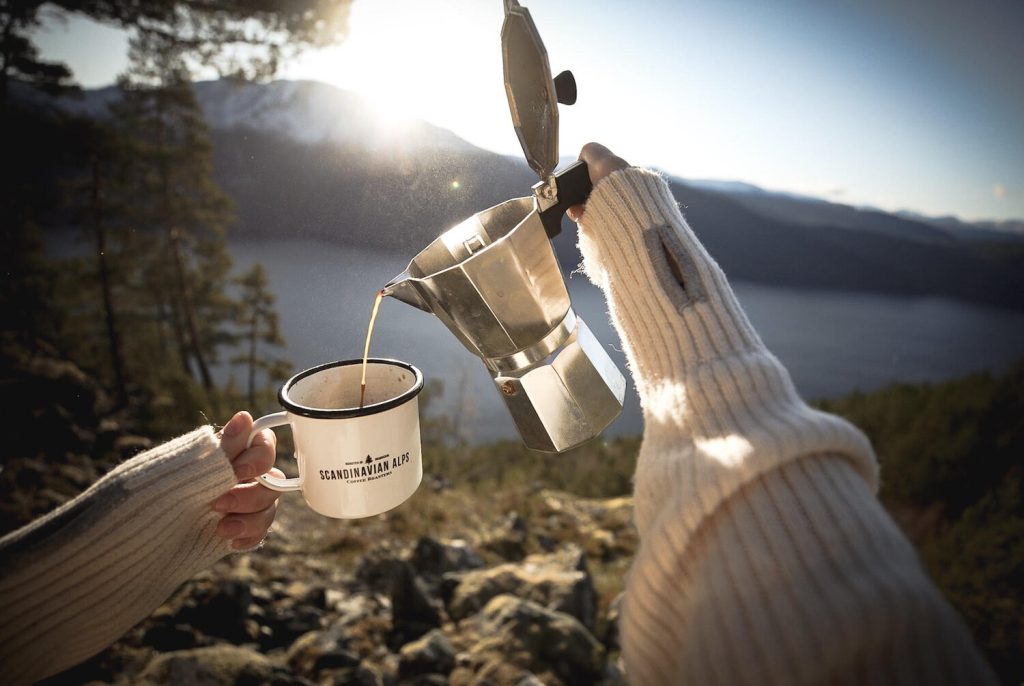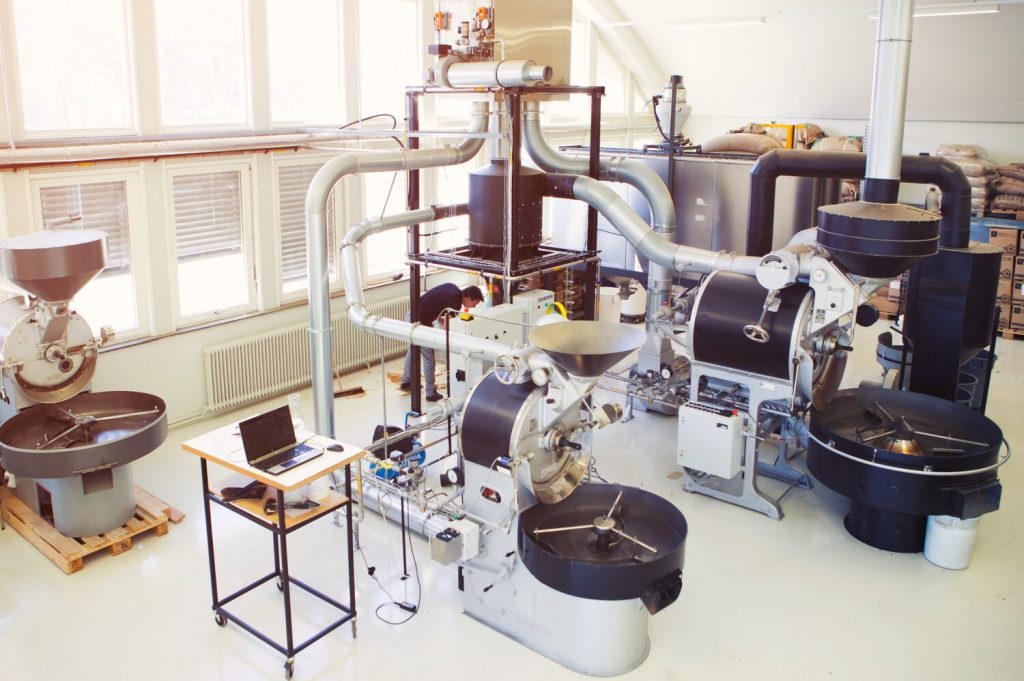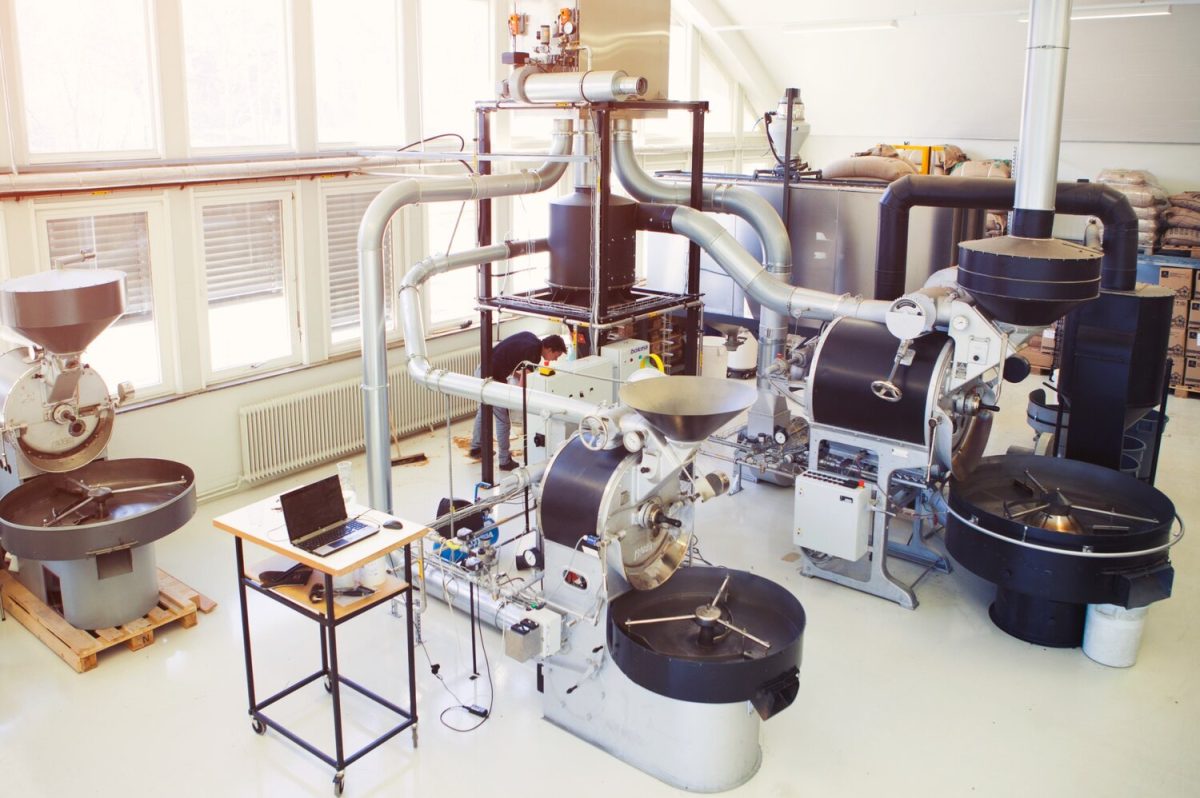Written by: Veronika Galova Vesela (https://www.roestcoffee.com/roestblog/nordic-roasting-style)
In 2014, when I lived in Prague, we were always so excited to taste coffees from Norwegian specialty coffee roasters. It felt so exclusive and rare. Yet the excitement was gone after tasting the cup. Flat is the word we would use to describe the experience. It was nothing like we were used to within our market.
Today, I have been in Norway for two years, and the local coffee is complimenting my taste buds.
Bjørnar Hafslund, founder of Brattestø roastery, has been roasting since 2006. He says: “I would like to compare the coffees I roasted in 2006 and now. I am sure they were extremely underdeveloped.”

Is that the Nordic roasting style?
Norway is known as the world’s second largest consumer of coffee. Coffee rituals are tied to long summer days: cooking coffee at the hytta (cabin) deep in the beautiful northern nature.
A country with over 80 roasteries and home to World coffee champions, Norway is well-known for the trend of Nordic roasting style. The Nordic roasting style can simply be described as a lighter roast. Specialty coffee is roasted light by default in comparison with commercial grade coffee.
Does this mean the Nordic style is lighter than others? Or is there more to it?
I talked with Norwegian roasters and roasters outside Norway who follow this style, to understand where it started and the secret behind it.
Where it came from
SCANDINAVIAN OR NORDIC?
Simo Kristidhi, the Head roaster at Solberg & Hansen, explains: “Norwegian roast is the one that is the closest to what we nowadays call Nordic roast, as it has always been lighter. In comparison, Sweden and Finland have an excessive darker roast.”
The idea of the Nordic roasting style started around 20 years ago, along with the rise of specialty coffee in the Nordic countries. The very first world barista championships, Nordic Barista cup or Nordic Roaster, are among the most important events that shaped the local coffee industry. Specialty coffee roasteries and personalities have a huge impact on the way the local market evolved: Tim Wendelboe, Solberg & Hansen, Kaffa or people like Andreas Hertzberg, and many others, played important roles.
Bjørnar remembers when Trish Gothreb, the first roaster at Mocca roastery (currently Kaffa), came to Norway with her (back then, controversial) roasting style: “The roast level she had was so light in comparison to what the industry was used to. Everyone was sceptical. And the fact is, compared to today’s standards, it wasn’t even so light.”
Roasting coffee lighter is only possible when roasting high-quality coffee. Otherwise, we are risking unpleasant outcomes. Because of a trade exchange with Brazil in the early 19th century, Norway could access high-quality coffee in exchange with fish.
Bjørnar plays with the idea of Norwegian acquired taste: “Norwegians are more accustomed to food with higher levels of acidity. Because of our cold climate, the fruits that dominate our fauna are apples and berries.”
Brewed coffee in Norway is like an espresso in Italy: It comes with a strong tradition. And lighter roast fits brewed coffee the best.

The idea behind
There are different roasting styles in the world. In Asia, you will experience specialty coffee roasted darker than the Nordic roasting style. As well as in North America: “I’d say, on average the ‘American’ style of roasting is still darker than the average Nordic roasting style, especially within specialty roasters”, says Lance Schnorenberg, the head roaster of SEY coffee in New York.
Most of the roasters have their own style or strategy for roasting coffee. This could be the way they approach beans, and what they are aiming to develop in the cup.
When trying to define the Nordic style, what I found similar is the aim for flavour development, and the unique taste experience when looking for the right profile for each coffee.
SEY coffee in New York is famous for roasting coffee the Nordic style, and the head roaster Lance explains: “I like to think about roasting or development as trying to be as transparent as possible. This is probably in line with the Nordic or Scandinavian style. We try to roast in a way that is as clear a representation of the coffee and terroir as we possibly can.”
Simo describes the idea behind the Nordic roasting style: “…to showcase the potential of the bean, taking in consideration the origin, the variety, the process and terroir. The result is an enormous differentiation of taste attributes between origins, lots and varieties, instead of delivering a coffee that tastes just coffee.”
Sounds like the ideal roasting style, doesn’t it? So why isn’t everyone roasting this way?
Roasting coffee lighter can be tricky. If you stop the roast too soon, the taste will not quite develop. The result will be a green and underdeveloped cup.
Nordic style is not only about roasting light, or quickly, as some have described it. Simo explains with an example: “A perfect Nordic style Kenyan coffee can be roasted at a certain colour development within 8-9 minutes, while a Colombian coffee can be roasted at a different colour development at 9:30-10 minutes. Which means that this style is not only about the fast and light roasts. It’s about taste and at which point this coffee will be the most developed and complex.”
“We (coffee professionals) like and seek light roasted coffee that represents the farm, terior, variety… Maybe it drives back to the Nordic countries who started the trend, but that trend has grown worldwide. What makes us stand out is that since it originated here (in Norway), we have a responsibility to keep that going strong in terms of consistency, skill of roasted coffee, and interesting coffee origins. Therefore in our roastery it all comes down to: hard work and passion, cupping constantly, and always being students of coffee.”
Adrian Seligman, Founder of Scandinavian Alps Roastery
Future of the roasting style
What is the future of the specialty coffee industry on the roasting level? The rise of smart technology, especially in roasting, allows us to control many useful parameters. For example, with our ROEST sample roaster you can measure bean or environmental temperature, adjust drum speed, power, and fan. The more information you can get from the roaster, the more you can improve your roasting skills.
Nowadays, we can also learn more about roasting from the educational events and roasting courses that are getting more and more available: “The forums, such as Nordic roasters, revolutionized the global roasting community, spreading knowledge and educating the new generation,” explains Simo. “Still, there is a big gap from roastery to roastery in how they interpret and perceive the development level of the coffee. Unfortunately, some of the coffee is quite underdeveloped. For that reason, I believe that many roasters will improve their profiles to deliver a cup that is up to the expectations of the Nordic Style.”
Lance adds: “People are learning, and once people drink coffee with acidity and learn to appreciate it, it’s generally very difficult to go back to drinking coffee that doesn’t have it.” After all, the coffee industry is (and will be) about the customers.”
If you ever go to Zürich, make sure to stop by at MAME coffee shop where you will have delicious coffee, served by awarded baristas. And please note the quote in the window, which I believe will always remain the most important factor regarding coffee, no matter what style you roast:
“THE BEST COFFEE IS THE COFFEE YOU LIKE!”
